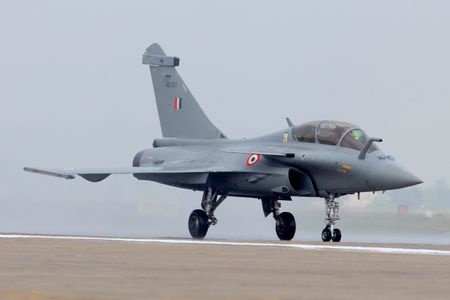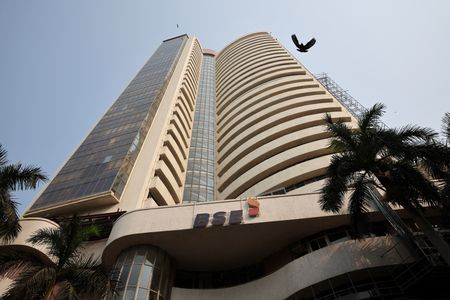By Dharamraj Dhutia and Nimesh Vora
MUMBAI (Reuters) -The path for Indian rupee and government bonds this week hinges on the geopolitical fallout from the militant attack in Kashmir, traders said.
India has said there were Pakistani elements in the April 22 attack, when militants shot 26 men in a meadow in the Pahalgam area of Kashmir, and Islamabad has denied any involvement.
The nuclear-armed nations have unleashed a raft of measures against each other, with India keeping a critical river water-sharing treaty in abeyance and Pakistan closing its airspace to Indian airlines, among other steps.
Fears of fresh tensions with long-time rival and neighbour Pakistan spooked markets last week.
On Friday, the rupee swung between 85.09 and 85.65 to the dollar and closed at 85.45. Stocks declined 0.7%-0.9% while the 10-year benchmark bond yield rose 4 basis points to end at 6.3645%.
Friday’s trade underscored the market’s concern over the potential fallout from the Kashmir attack, Kunal Kurani, Assistant Vice President at Mecklai Financial, said. “For now, the rupee’s near-term range is 85.00 to 85.70. That could shift if there are significant developments.”
Currency traders will also keenly watch U.S. tariff headlines, after there were signs of a de-escalation of the trade war between the U.S. and China.
A positive shift in trade negotiations could support the dollar, while a lack of progress or negative headlines would likely pressure it lower.
Meanwhile, traders expect that India’s benchmark bond yield to hover between 6.30% and 6.40% this week, with any flare up in tensions between the two nuclear-armed rivals resulting in a break to the upside.
The yield has been on a downtrend recently due to expectations of more rate cuts from the domestic central bank and its assurance on a banking system liquidity surplus.
The Reserve Bank of India will buy 200 billion rupees of bonds this week. It has bought nearly 3.7 trillion rupees of bonds in the first four months of 2025.
“A rate cut in June appears to be a done deal barring some severe dislocation in global markets that adversely affects EM currencies like rupee,” ICICI Securities Primary Dealership said. RATES
India’s overnight index swap (OIS) rates are also expected to react to geopolitical developments this week.
The one-year, two-year and the most liquid five-year swap rates ended largely unchanged last week, but witnessed choppy moves in the second half.
The rates had dropped by 23 basis points to 31 basis points in the first three weeks of April.
KEY EVENTS:
India
** March infrastructure output – April 28, Monday (4:00 p.m. IST) ** April HSBC manufacturing PMI – May 2, Friday (10:30 a.m.)
U.S.
** April consumer confidence – April 29, Tuesday (7:30 p.m. IST) ** January-March GDP advance – April 30, Wednesday (6:00 p.m. IST) (Reuters poll 0.4%)
** March personal consumption expenditure index, core PCE index – April 30, Wednesday (6:00 p.m. IST)
** Initial weekly jobless claims week to April 21 – May 1, Thursday (6:00 p.m. IST) ** April S&P Global Flash manufacturing, services and composite PMI – May 1, Thursday (7:15 p.m. IST)
** April ISM manufacturing PMI – May 1, Thursday (7:30 p.m. IST) ** April non-farm payrolls and unemployment rate – May 2, Friday (6:00 p.m. IST) ** March factory orders – May 2, Friday (7:30 p.m. IST)
($1 = 85.3790 Indian rupees)
(Reporting by Dharamraj Dhutia and Nimesh Vora; Editing by Mrigank Dhaniwala)










